import tensorflow as tf import matplotlib.pyplot as plt import numpy as np from tensorflow.keras.datasets import mnist #MNIST数据集参数 num_classes = 10 num_features = 784 #28*28 #训练参数 learning_rate = 0.01 training_steps = 1000 batch_size = 256 display_step = 50 #加载MNIST数据 (x_train,y_train),(x_test,y_test) = mnist.load_data() #转换为float32 x_train,x_test = np.array(x_train,np.float32),np.array(x_test,np.float32) #将图像平铺成784个特征的一维向量(28*28) x_train,x_test = x_train.reshape([-1,num_features]),x_test.reshape([-1,num_features]) #将像素值从[0,255]归一化为[0,1] x_train,x_test = x_train/255,x_test/255 #使用tf.data api 对数据随机分布和批处理 train_data = tf.data.Dataset.from_tensor_slices((x_train,y_train)) train_data = train_data.repeat().shuffle(5000).batch(batch_size).prefetch(1) # 权值矩阵形状[784,10],28 * 28图像特征数和类别数目 W = tf.Variable(tf.ones([num_features, num_classes]), name="weight") # 偏置形状[10], 类别数目 b = tf.Variable(tf.zeros([num_classes]), name="bias") # 逻辑斯谛回归(Wx+b) def logistic_regression(x): #应用softmax将logits标准化为概率分布 return tf.nn.softmax(tf.matmul(x,W) + b) # 交叉熵损失函数 def cross_entropy(y_pred, y_true): # 将标签编码为一个独热编码向量 y_true = tf.one_hot(y_true, depth=num_classes) # 压缩预测值以避免log(0)错误 y_pred = tf.clip_by_value(y_pred, 1e-9, 1.) # 计算交叉熵 return tf.reduce_mean(-tf.reduce_sum(y_true * tf.math.log(y_pred))) # 准确率度量 def accuracy(y_pred, y_true): # 预测的类别是预测向量中最高分的索引(即argmax) correct_prediction = tf.equal(tf.argmax(y_pred, 1), tf.cast(y_true, tf.int64)) return tf.reduce_mean(tf.cast(correct_prediction, tf.float32)) # 随机梯度下降优化器 optimizer = tf.optimizers.SGD(learning_rate) # 优化过程 def run_optimization(x, y): # 将计算封装在GradientTape中以实现自动微分 with tf.GradientTape() as g: pred = logistic_regression(x) loss = cross_entropy(pred, y) # 计算梯度 gradients = g.gradient(loss, [W, b]) # 根据gradients更新 W 和 b optimizer.apply_gradients(zip(gradients, [W, b])) # 针对给定训练步骤数开始训练 for step, (batch_x, batch_y) in enumerate(train_data.take(training_steps), 1): # 运行优化以更新W和b值 run_optimization(batch_x, batch_y) if step % display_step == 0: pred = logistic_regression(batch_x) loss = cross_entropy(pred, batch_y) acc = accuracy(pred, batch_y) print("step: %i, loss: %f, accuracy: %f" % (step, loss, acc)) # 在验证集上测试模型 pred = logistic_regression(x_test) print("Test Accuracy: %f" % accuracy(pred, y_test)) #可视化预测,在测试集中预测5张图片 n_images = 5 test_images = x_test[:n_images] predictions = logistic_regression(test_images) for i in range(n_images): plt.imshow(np.reshape(test_images[i],[28,28])) plt.show() print("Model prediction: %i" % np.argmax(predictions.numpy()[i]))
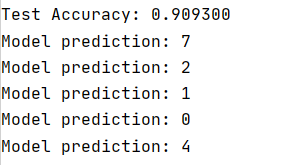
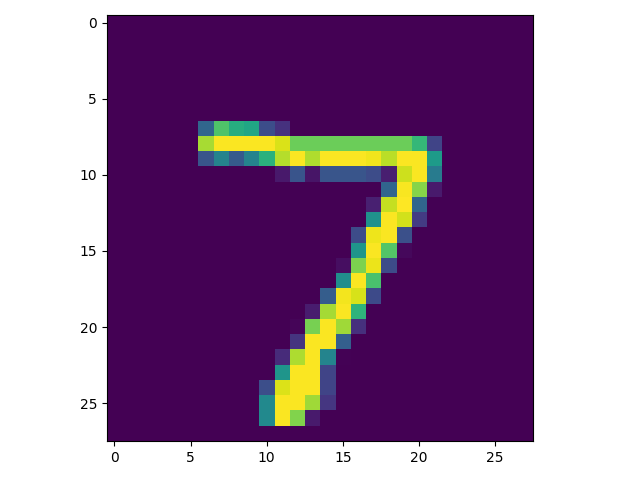
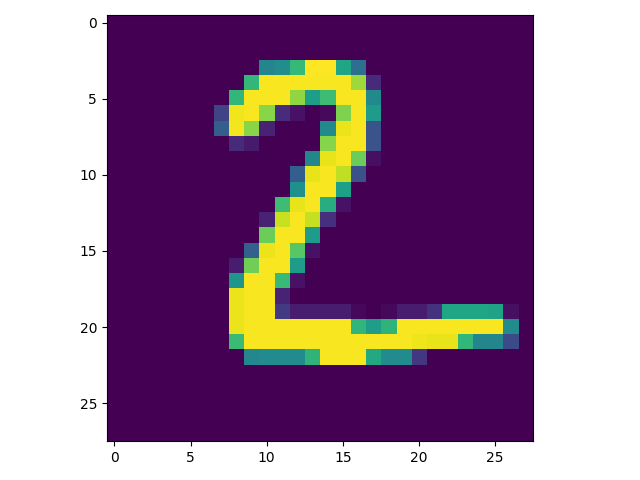
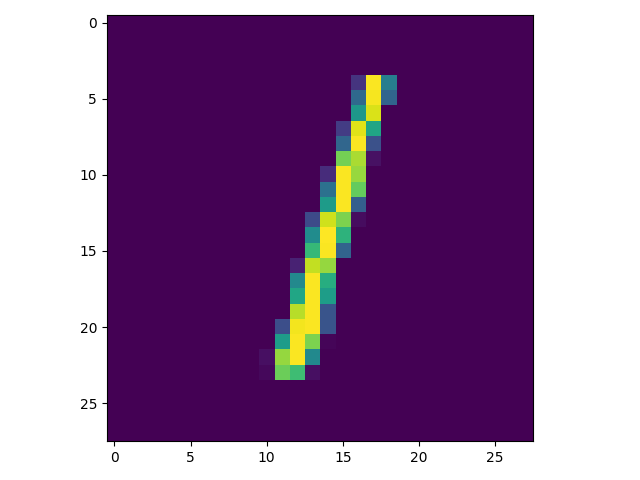
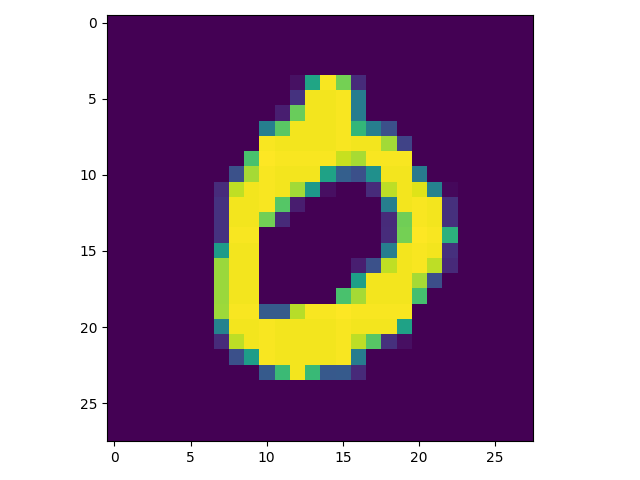
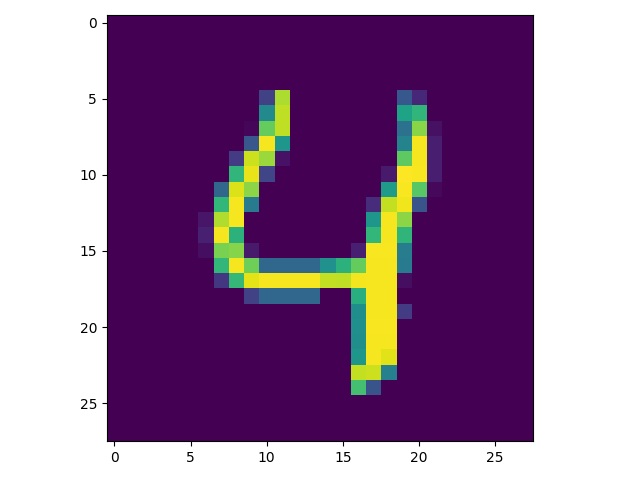
原文:https://www.cnblogs.com/xhj1074376195/p/14320369.html